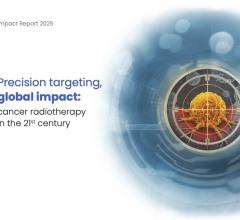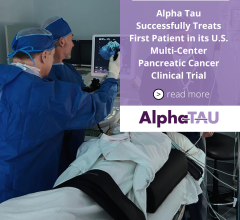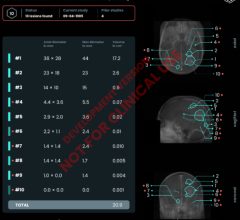
August 4, 2011—The first multi-institutional study evaluating a new form of radiation treatment for prostate cancer coupled with sophisticated real-time tumor tracking is now underway at the University of Michigan Health System in Ann Arbor, Mich. Principal investigator Daniel A. Hamstra, Ph.D., M.D., assistant professor, department of radiation oncology, along with 10 co-investigators, are evaluating the safety of shortened (hypofractionated) stereotactic body radiation therapy (SBRT) with Calypso Medical’s GPS for the Body technology, used for real-time tracking of cancerous tumors during prostate radiotherapy, and comparing it to conventional radiation treatment.
According to Hamstra and co-investigators, SBRT heightens the need for accurate, precise real-time tracking of prostate motion during radiation treatment. The delivery of larger, more concentrated radiation doses creates concern about exposing the surrounding healthy tissue to the same high doses, thereby increasing the potential for side effects such as rectal injury, impotence and difficulty urinating. Calypso Medical’s real-time tracking technology accurately and precisely tracks the location of the prostate to allow doctors to confidently deliver larger doses of SBRT, while lowering the total number of treatments.
“To a large extent, identification of prostate location has only been performed prior to the start of treatment without taking into account the motion of the prostate during treatment, yet precise targeting of the prostate gland during radiation is critically important in order to avoid delivering unintended radiation to healthy tissue,” said Hamstra. “This is the first multi-institutional study to incorporate use of the Calypso real-time tumor tracking technology, which allows us to significantly reduce the margin of healthy tissue around the prostate to prevent the development of unwelcome side effects. We are optimistic that use of the Calypso System in concert with a small number of dose-intensified treatment sessions may be a way to optimize SBRT.”
The multi-site study is testing whether a short-course, treatment regimen with continuous real-time evaluation of prostate motion is safe and effective for patients compared to conventional treatment. The 39-month Phase II study will enroll 66 patients, who will receive five 30-minute treatment sessions (fractions) of radiation with at least two days between each fraction. Each fraction size will be 7.4 Gray (unit of absorbed radiation dose) and the total radiation dose will be 37 Gray. The shortened five-fraction treatment will range from just 15-19 calendar days in comparison to conventional treatment protocol of 40-45 daily treatments, which takes eight-to-nine weeks to complete.
“The Calypso technology is critical because it provides the only real-time means to localize the prostate, providing needed information regarding motion that occurs due to normal bladder and bowel filling,” said Dale Litzenberg, Ph.D., co-investigator and clinical assistant professor, department of radiation oncology, University of Michigan. “With this information, we can use tighter treatment margins, which should lessen the risk for both acute and late toxicities. Combining Calypso with SBRT creates a treatment approach that allows patients to maintain their quality of life while spending significantly less time away from family and work.”
In addition to the University of Michigan, participating institutions include Washington University (St. Louis, Mo.); The Fox Chase Cancer Center (Philadelphia); Cedars Sinai Medical Center (Los Angeles), and Radiation Oncology Centers (Sacramento, Calif.).
“We are very encouraged by this multi-institutional study evaluating Calypso’s real-time tumor tracking for prostate SBRT, as this research will offer broad-based information to complement previous single-center studies with the same objectives,” said Lisa Levine, Ph.D., vice president, clinical and pre-market regulatory affairs for Calypso Medical. “Recent results from a single-center study reported favorable toxicity and quality-of-life outcomes in urinary, rectal and sexual function. These study results and others suggest that the much shorter delivery schedule combined with the potential for a more efficacious treatment makes SBRT a very appealing option for the right patient.”
Calypso Medical will highlight the use of real-time tracking during prostate cancer radiotherapy and investigational use in lung cancer at the upcoming 2011 Joint American Association of Physicists in Medicine (AAPM) and the Canadian Organization of medical Physicists (COMP) meeting, July 31-August 4 at the Vancouver Convention Centre (Booth #1131).
For more information: www.calypsomedical.com


 November 04, 2025
November 04, 2025 









